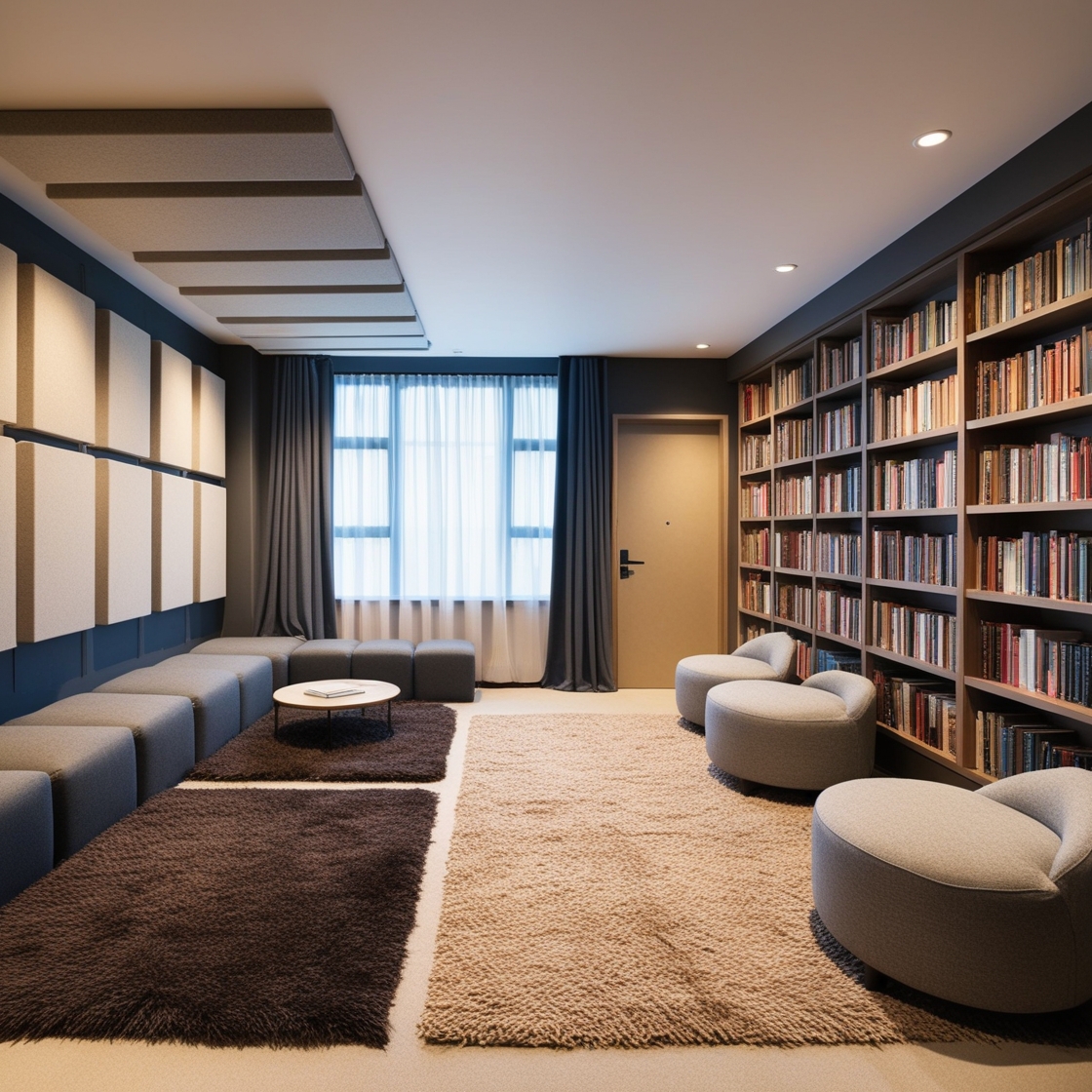Whether you’re creating a home office, recording studio, or simply trying to reduce noise, soundproofing a room can significantly improve the comfort and functionality of your space. Effective soundproofing involves a combination of techniques that block, absorb, and reduce noise. Here are some of the best methods to soundproof a room effectively.
1. Seal Gaps and Cracks
One of the simplest and most cost-effective ways to soundproof a room is by sealing any gaps and cracks where sound can leak through.
- Doors and Windows: Use weatherstripping around doors and windows to seal gaps that let noise in or out. For doors, adding a door sweep at the bottom can prevent sound from traveling through the gap beneath the door.
- Caulk Cracks: Apply acoustic caulk or sealant to any cracks or gaps in walls, around window frames, or at the edges of baseboards. This helps to block sound from passing through these openings.
2. Install Acoustic Panels
Acoustic panels are designed to absorb sound waves, reducing echo and noise within a room. They are an effective solution for improving the acoustics in spaces like home theaters, offices, or recording studios.
- Placement: Install acoustic panels on the walls, especially in areas where sound reflections are most prominent, such as opposite speakers or along parallel walls. You can also add panels to the ceiling if needed.
- Types of Panels: Choose from foam panels, fabric-wrapped panels, or wooden diffusers, depending on your aesthetic preference and soundproofing needs. Some panels are designed to be decorative and can add a stylish touch to your room.
3. Add Mass to Walls and Ceilings
Increasing the mass of your walls and ceilings can significantly reduce sound transmission. This method involves adding dense materials that block sound waves from passing through.
- Mass Loaded Vinyl (MLV): MLV is a heavy, flexible material that can be installed behind drywall, under flooring, or on ceilings to add mass and block sound.
- Double Drywall: Adding an extra layer of drywall with a damping compound like Green Glue between the layers can also help to reduce noise. This method is effective for both walls and ceilings.
- Soundproof Insulation: Consider installing soundproof insulation, such as mineral wool or fiberglass, inside walls and ceilings. This helps to absorb sound within the structure, preventing it from traveling to adjacent rooms.
4. Soundproof Doors and Windows
Doors and windows are often the weakest points in a room when it comes to soundproofing. Upgrading these elements can make a big difference in reducing noise.
- Solid Core Doors: Replace hollow core doors with solid core doors, which are much denser and better at blocking sound. Additionally, ensure the door is well-fitted to minimize gaps.
- Soundproof Windows: Install double-pane or laminated glass windows, which are more effective at blocking sound than single-pane windows. If replacing windows is not an option, consider adding window inserts or heavy, soundproof curtains.
5. Use Rugs and Carpets
Hard surfaces like wood or tile floors can reflect sound, causing it to bounce around the room. Adding soft materials like rugs and carpets helps to absorb sound and reduce noise levels.
- Area Rugs: Place thick area rugs on the floor, especially in larger rooms or spaces with high ceilings. Rugs with dense fibers are particularly effective at absorbing sound.
- Carpeting: Wall-to-wall carpeting provides even greater sound absorption, making it a good option for rooms where you need more substantial soundproofing.
6. Install Door and Window Treatments
Specialized door and window treatments can further enhance the soundproofing of a room.
- Soundproof Curtains: Heavy, dense curtains designed specifically for soundproofing can reduce noise from outside. These curtains typically have multiple layers of fabric, including a thick inner lining.
- Acoustic Blinds: Acoustic blinds or shades can also help to block noise and improve the room’s soundproofing capabilities. These treatments can be used alone or in combination with soundproof curtains for added effectiveness.
7. Use Furniture Strategically
Furniture can also play a role in soundproofing by helping to absorb and block sound.
- Bookshelves: Place large bookshelves against shared walls to add mass and reduce noise transmission. Filled with books or other dense objects, they can effectively dampen sound.
- Upholstered Furniture: Sofas, armchairs, and other upholstered furniture absorb sound, reducing echoes and noise within the room. Arrange them in areas where sound tends to reflect, such as near walls or corners.


